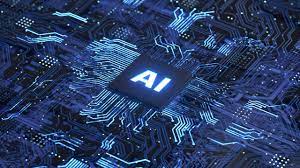Using Embedded AI for analyzing data
– By Aditya Abeysinghe

 The term AI (Artificial Intelligence) is often thought to be a term used with heavy computation and memory. Applications using AI are usually deployed in PCs and servers. However, with the growing use of analysis on systems using AI, the use of PCs and servers for monitoring and then analyzing tasks is often inefficient. Therefore, a new method of using AI within systems has been tested. This usage is known as embedded AI.
The term AI (Artificial Intelligence) is often thought to be a term used with heavy computation and memory. Applications using AI are usually deployed in PCs and servers. However, with the growing use of analysis on systems using AI, the use of PCs and servers for monitoring and then analyzing tasks is often inefficient. Therefore, a new method of using AI within systems has been tested. This usage is known as embedded AI.
What is the use of Embedded AI?
With the use of sensors and other devices for monitoring systems, especially in factories analysis of data at real-time has become a necessity. The usual method of analysis is transferring data to connected PCs and servers due to low computational and memory capacity in devices that directly capture data. However, real-time analysis of data is often necessary in systems which need to monitor and keep systems within safe limits. Therefore, obtaining sensor data and then analyzing them in a remote environment is often impractical.
Coupled with latency uploading data to a remote environment has privacy issues. When data is transmitted to a remote server, data is often stored in a server or PC whose ownership and access is not traced. Therefore, these data could be easily attacked during or after uploads. Also who can view data for spying and intelligence is difficult to be monitored. Therefore, analyzing data in a remote environment could lead to attacks and privacy issues.
Meanwhile, maintenance and purchase of remote servers and devices are often expensive and a separate team is often necessary for such tasks. Scaling up or down of resources is often necessary and all activities from internal device analysis, to analysis in a remote environment needs to be aggregated when making decisions. This is often a costly process requiring the involvement of multiple teams and vendors.
Finally, the secrecy of AI models could be easily hacked when executed on a remote environment. Input parameters and the process, if the code is implemented in this remote environment, could be changed or stolen by hackers to change outputs. This could cause fault decisions returned to the sender or data could be made unavailable, such that damages are made to systems.
These reasons have led to the development of AI based analysis within devices itself. These models are embedded inside and monitor data real-time without requiring a remote environment for analysis.
How does embedded AI work?
Internet of Things (IoT) devices are used when data is analyzed using embedded AI. Typically, use of heavy computation within IoT was not thought due to their low processing and memory limits. However, new developments in AI have fine-tuned models to run within these limits. Results on several systems show that highly accurate analyzing capacity is made possible with these models.
Image courtesy: https://www.sigarch.org







